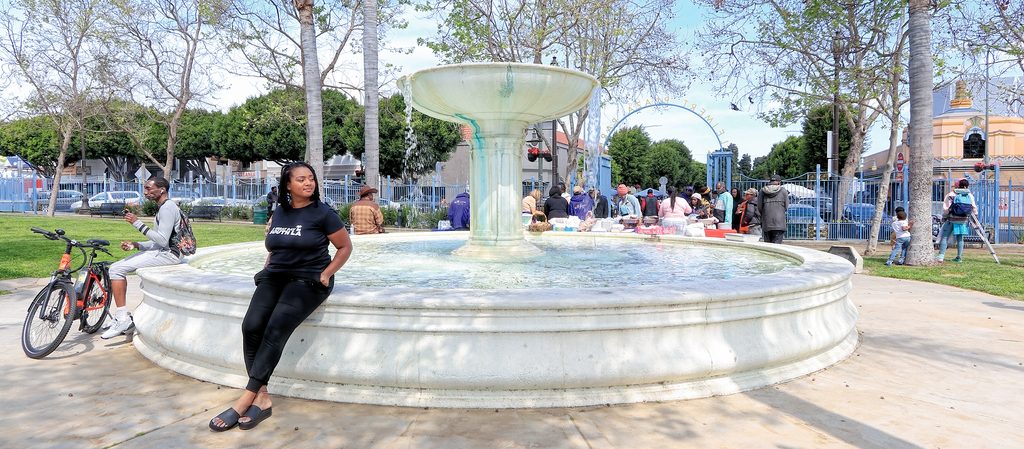
“You came all the way to South LA; I want to make it worth your while,” Janae Green ’10 says as her group files into Los Angeles’s 27th Street Bakery. Inside, sweet potato pie awaits, a mainstay at the Black-, family-owned shop for 70 years. The sustenance is matched by the substance of the rest of A Great Day in South LA, Green’s four-hour Black history tour of her adopted neighborhood.
“South LA suffers from a single-story narrative,” Green says of a neighborhood where a quarter of residents live below the poverty line. “I hear from naysayers, ‘Why would you want to visit that wasteland?’ When I look outside, I don’t see a wasteland. I see the neighborhood I love. I see families. I see beautiful homes. I see many different cultures. I see history. So my goal is to shout to the mountaintops about why South LA matters.”
Launched in March 2024, Green’s tour highlights some 35 sites and figures, including Paul R. Williams, the architect whose futuristic designs (including the iconic Beverly Hills Hotel) are central to LA’s aesthetic; the late Crenshaw rapper and philanthropist Nipsey Hussle; and Biddy Mason, a woman born into slavery who, after being forced to walk 1,700 miles with a pioneer caravan, became one of the city’s first, and wealthiest, Black entrepreneurs.
As many LA stories go, it was the film industry that drew Green, a Chicago native, here. A Cinema and Media Studies major at Carleton, she moved a decade ago to finish her master’s degree in entertainment management, but the idea for the tour came later. In researching a Black history project with Ashley Dinzey ’11, Our Heritage Outside, she visited the Smoky Mountains National Park. A Black walking tour of Knoxville blew her away. “It didn’t occur to me then, but months later I walked out my front door and it hit me: what’s going on in my own backyard?”
Since March 2024, she’s been reveling in sharing stories about ways Black people helped shape the city’s development and identity. Like the fact that African and Afro-Latino people were among Los Pobladores, the city’s original 44 settlers. That Beverly Hills sits on land first owned by Afro-Latina rancher Maria Rita Valdez Villa. That Central Avenue was, not so long ago, home to dozens of jazz clubs, earning it the nickname Little Harlem. “This is history that’s fading away, and we need more people to beat the drum about the significance of that street.”
As its name suggests, A Great Day in South LA is about celebration, but Green notes that there are other realities to consider. Like the fact that it was segregation that forced Black musicians to transform Central Avenue into a jazz mecca, or that too many of her neighbors are facing hardship today. “I won’t sugar-coat things,” Green says. “I’ll talk about the struggles and the triumphs, not dwelling on the struggles, because Black people are not just struggle. We are about culture, we are about family, we are about joy.”
